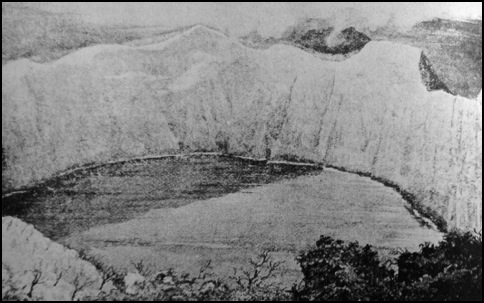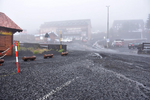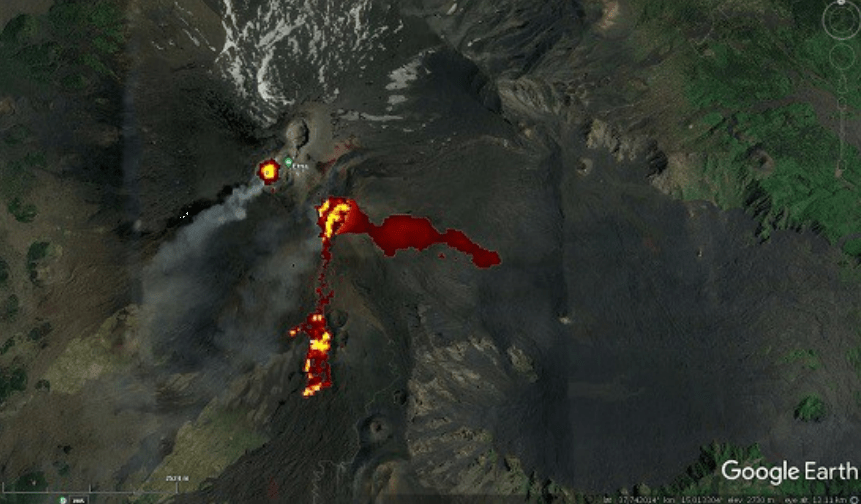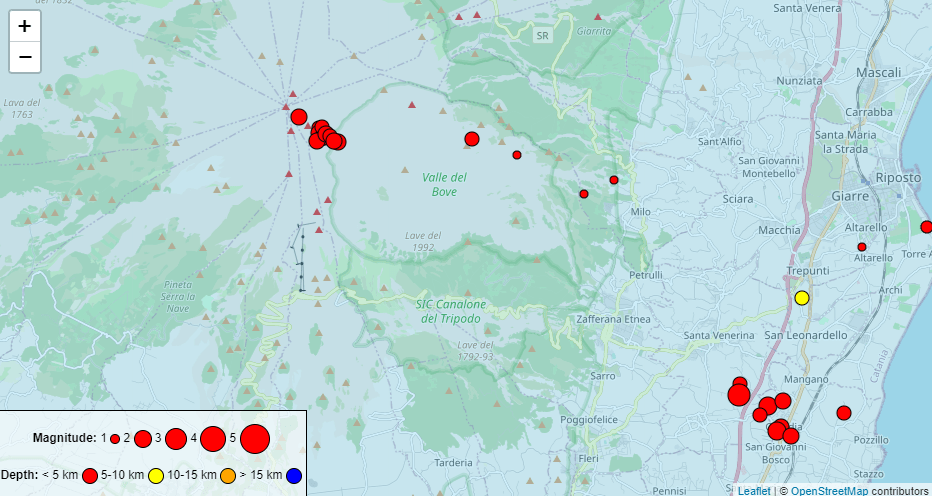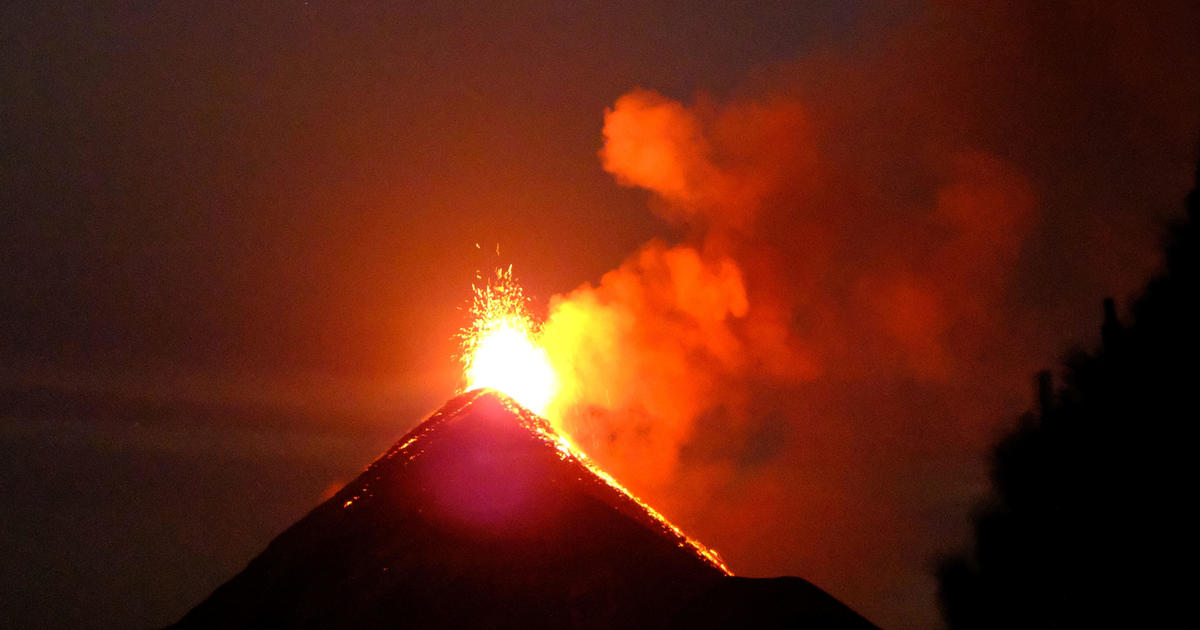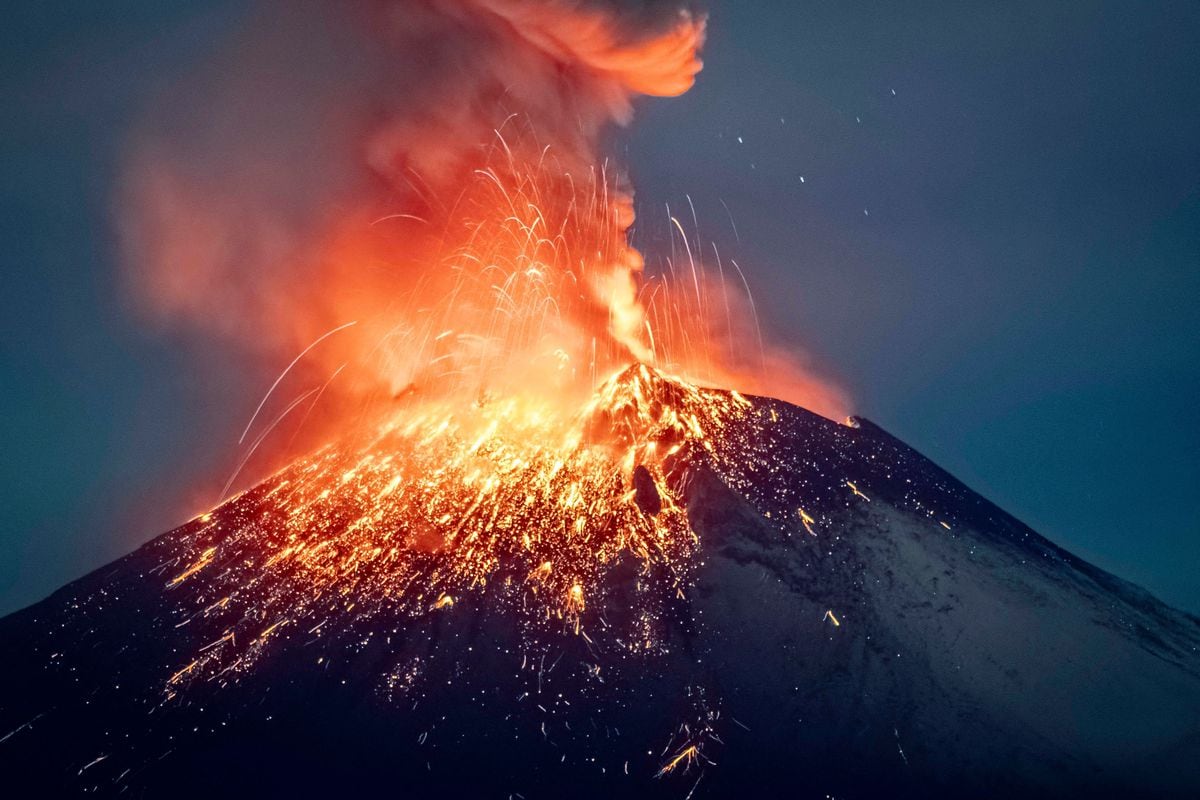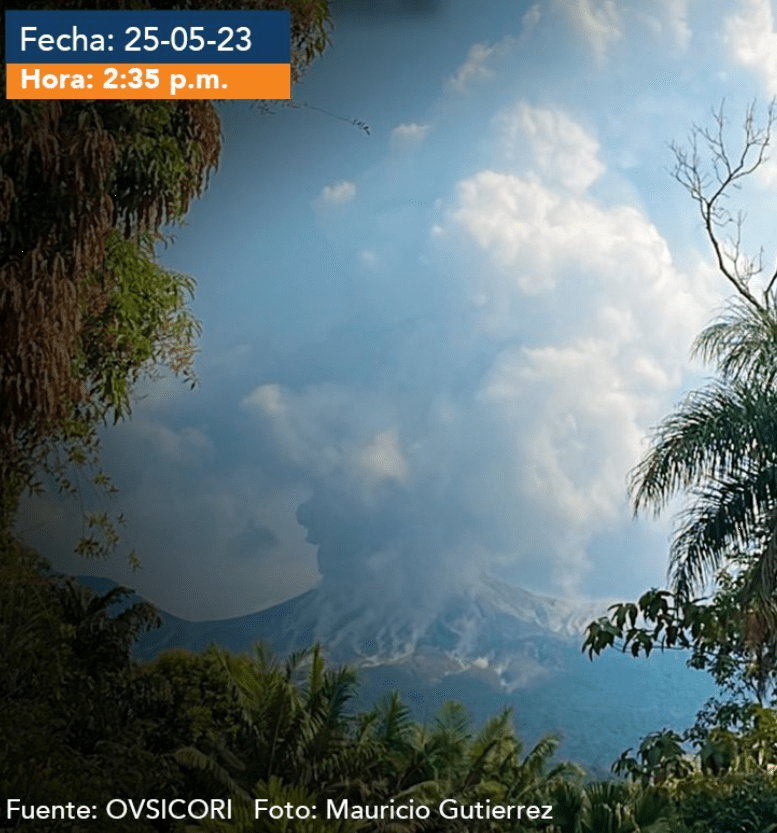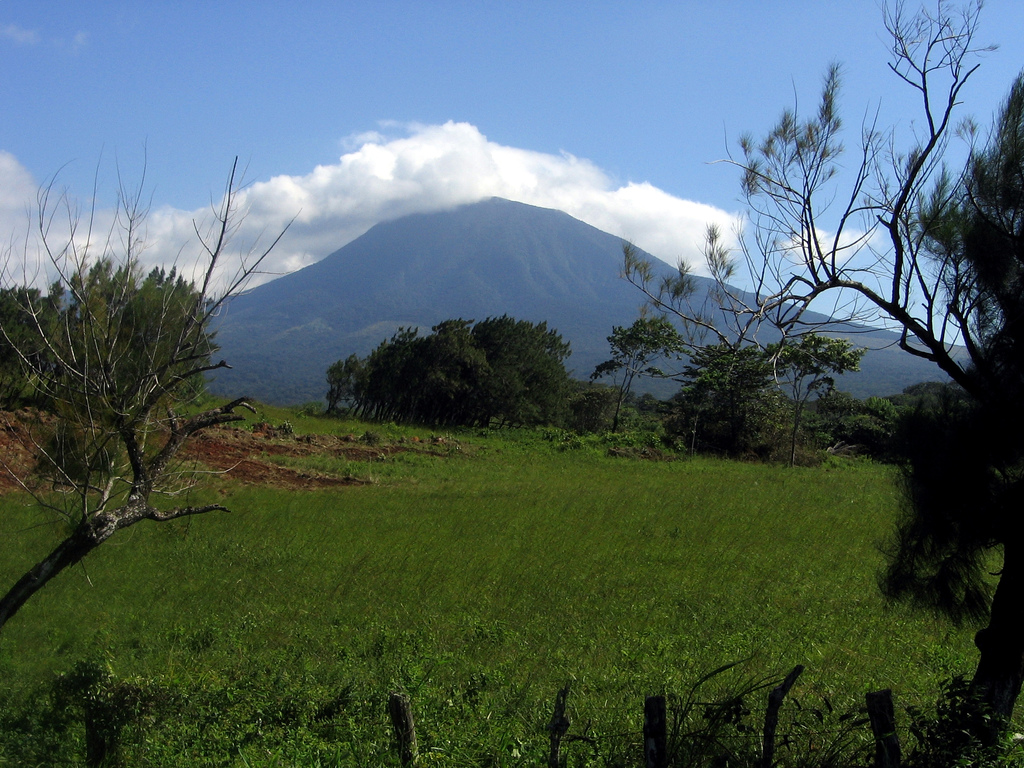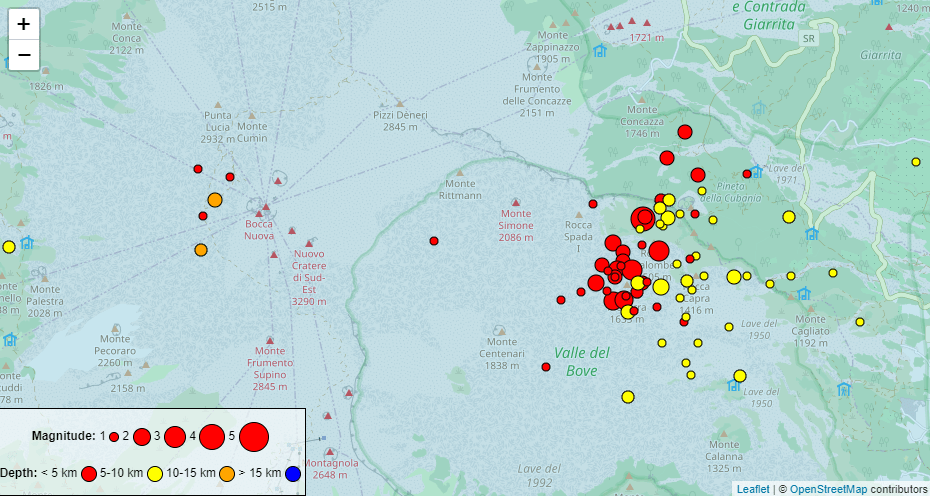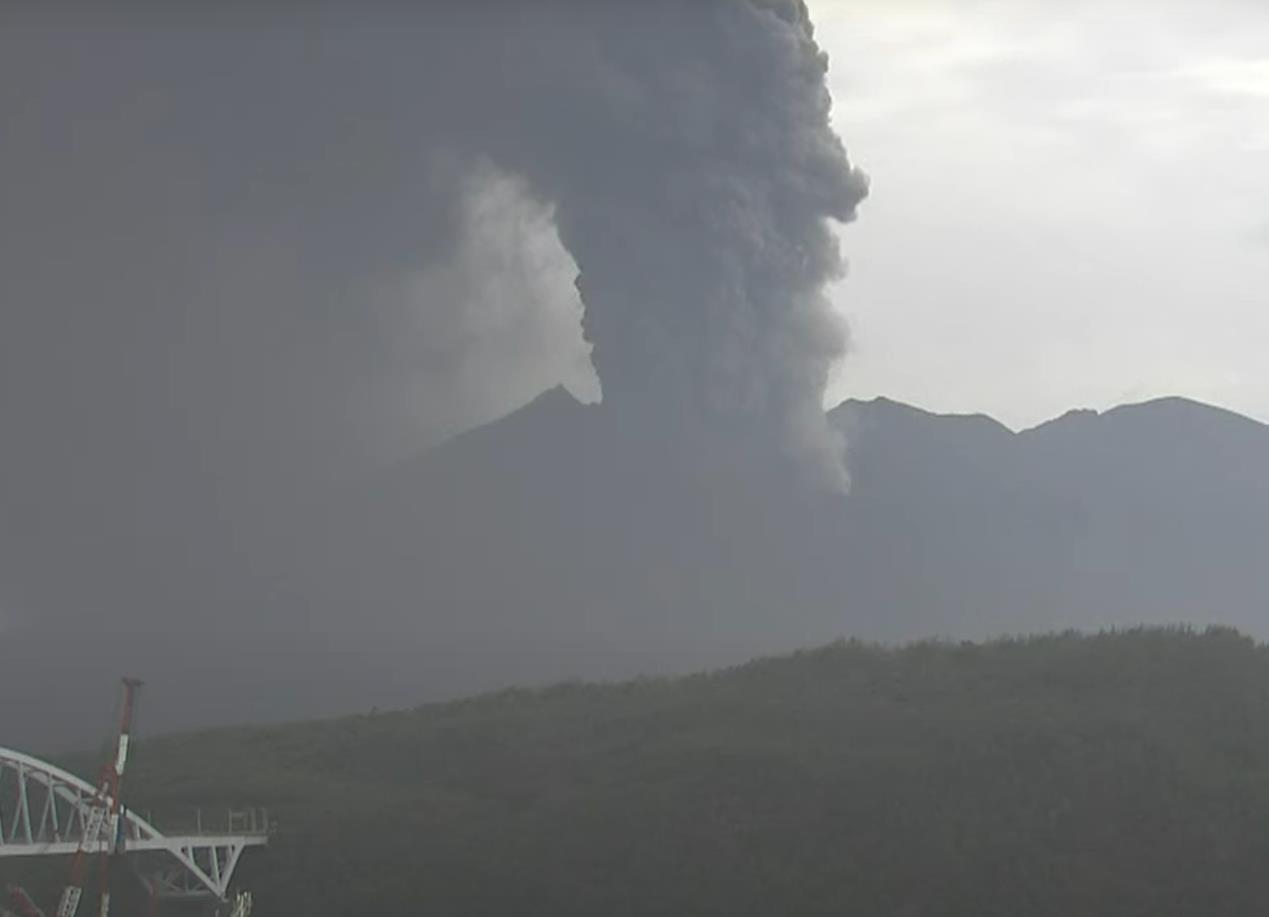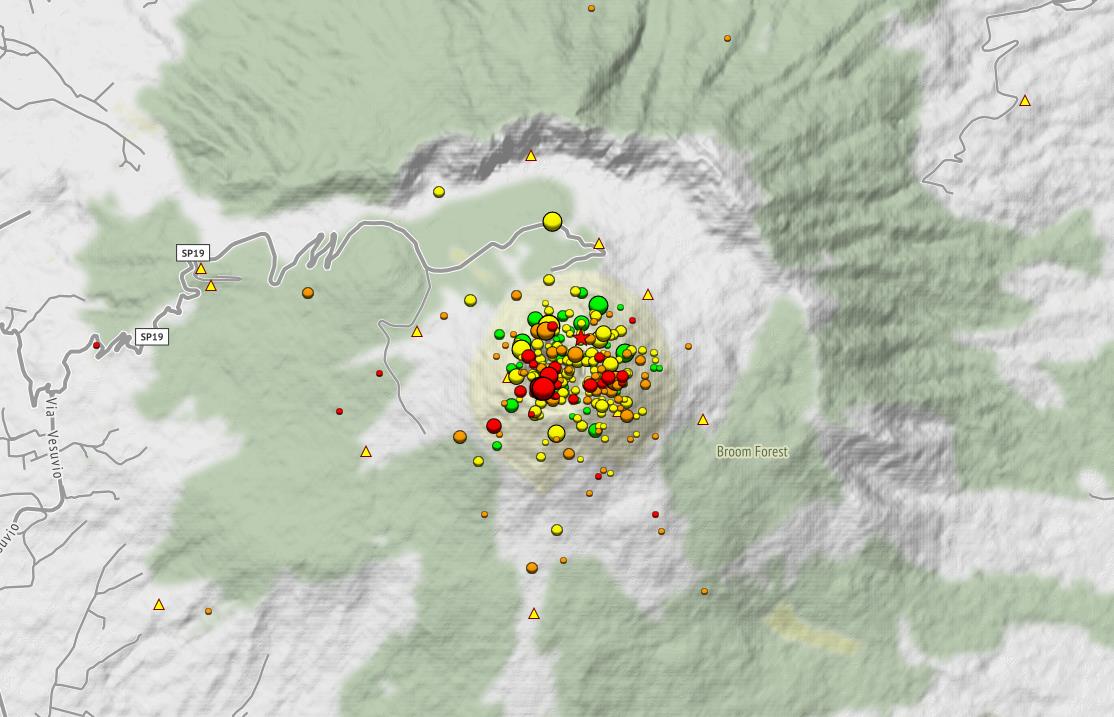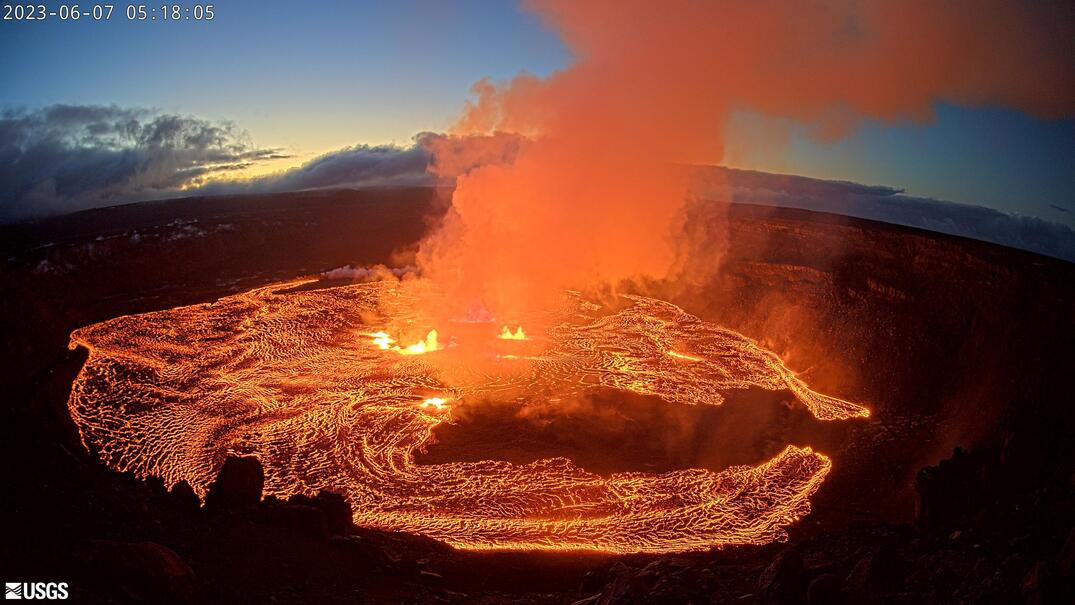1902
February
St. Pierre. A whiff of sulphurous gas was noticed.
March 23.
Mont Pelee. The Etang Sec, or 'dry tarn', a small crater containing a dried-up lake, emitted sulphurous vapour from several points.
April 14
Night. St. Vincent. Eight earth tremors caused landslides.
April 23
Mont Pelee. 3 shocks in St. Pierre; a great smoke cloud from the summit crater.
St. Pierre. A slight fall of ash, and several earth tremors, enough to knock dishes from shelves.
April 25
Mont Pelee. A ‘cap of white vapours' on Mont Pelee. The Etang Sec was filling up with boiling water. The crater of L'Etang Sec near the summit opened, and Mont Pelee threw up a huge cloud of ash and rock fragments.
St, Pierre. Sulphurous vapours made breathing difficult.
April 26
Mont Pelee. A similar eruption to that of the 25th covered much of the landscape with grey-white powder.
Soufriere, St. Vincent. The Lower Soufriere was in eruption.
April 27
Mont Pelee. The Etang Sec contained a small lake, with a small volcanic cone emerging from the centre. Smoke rose from this in puffs.
April 29
St. Vincent. Three 'well-marked shocks'.
3 p.m. St. Pierre. Several earthquake shocks between 3 and 5 p.m.
May 2 Friday
Mont Pelee. An eruption of vapours and ashes, which covered Le Precheur.
11.30 pm. Mont Pelee. Terrifying detonations woke everyone in St Pierre. “Every few moments electric flames of blinding intensity were traversing the recesses of black and purple clouds”. Ash covered the country to Fort de France.
St, Pierre. Ash was so deep in the streets as to stop traffic.
May 3 Saturday
6 am. Outskirts of St. Pierre. The Roxelane River was in flood.
Morning. Fort de France. The garrison commander of St. Pierre reported to Fort de France, 'The crater is completely inactive'.
Noon. Fort de France. An earth tremor, which was also felt in St.Pierre.
Evening. Mont Pelee threw out dense masses of smoke.
Evening. Pont Basin, St. Pierre. An iron-girdered bridge over the Roxelane River fell in an earth tremor; 20 persons were killed.
Evening. Mont Pelee. “Frightful detonations...The glowing cone was soon hidden by an enormous column of black smoke traversed by flashes of lightning.”
May 4 Sunday
Dawn. Ajoupa-Bouillon, a village on the eastern foot of Pelee. Steam and boiling mud from a fissure killed 188 persons.
Morning. Off St. Pierre. A cloud rose an estimated 30,000 feet from Mont Pelee, then a shower of stones and mud fell on the cable steamer
Pouyer-Quertier.
Mont Pelee. The sea breeze swept ashy fog away.
At sea . Ash fell so thickly that boats skirting the coast feared to navigate through it. The sea was covered with dead birds.
Evening. St. Pierre. Dust and scoria fell again. The ash fall on St Pierre was ¼ inch thick. The mountain was invisible.
Night. St. Pierre. A telegram was sent to the Minister of Colonies in Paris. 'An eruption of Mont Pelee has taken place...The eruption appears to be on the wane.'
The crater lake of Soufriere, shortly before 1902
May 5 Monday
Soufriere. There were signs of eruption. The lake in the old crater of the Soufriere became greatly disturbed. Fishermen crossing the lake noticed this.
Morning. Fort de France. Telegraphic communication with Dominica and St. Lucia was lost.
About noon. Mont Pelee. A stream of ‘lava’ rushed down the SW slope of the mountain, sweeping away buildings, plantations and people in a rush to the sea 5 miles away. The sea then receded 100 yards on the western coast, and returning invaded St. Pierre. The stream was of near-boiling water and mud a quarter of a mile wide and 100 feet deep. A mass of new hot rock forced its way up from the crater floor and displaced the water in L' Étang Sec, heating it to near boiling point. The flood rushed down the valley of the Riviere Blanche at a speed of about 90 km. an hour, carrying mud and boulders of up to 50 tons' weight. The sugar plant of Usine Guérin was overwhelmed; 30 persons were killed. The mudflow entered the sea and triggered a series of waves, one of which overwhelmed the yacht
Precheur, moored off the river mouth, with the loss of all on board. Another yacht and eight lighters were sunk.
1.22 p.m. St. Pierre. The sea retreated a hundred feet and returned in a wave that flooded the docks.
St. Pierre. Scores of snakes invaded the streets. Over 50 persons and 200 animals died from their bites. Soldiers' rifle fire and cats killed over 100 fer-de-lances.
A committee appointed by the Governor of Martinique reported that 'there is nothing in the activity of Pelee that warrants a departure from St. Pierre'.
Evening. St. Pierre. Atmospheric disturbances caused the failure of the city's electrical system and lighting. 617 persons were killed in the eruption in 4 days.
May 6 Tuesday
Guadeloupe . Volcanic detonations were clearly heard here 100 miles south of Martinique.
Mont Pelee. The summit was hidden by thick clouds of steam. Ash fell incessantly up to a foot deep.
00.01 a.m. Mont Pelee. '...long tongues of flame shooting out of the crater's neck, the like of which none of us had seen before'.
2 a.m. Mont Pelee. Mutterings sounded in Pelee's depths louder than thunder and people ran out of their houses.
8 a.m. St. Pierre. “...since eight o'clock this morning the roaring of the volcano continued...St. Pierre had been left in almost night darkness. For many days the disturbed condition of the atmosphere had interfered with the electric illumination...brilliant flashes of lightning...The ashes and cinders now fall over a wide area”.
St. Pierre. The mayor issued a proclamation to the citizens; “The...eruption of Mont Pelee has thrown the whole island into consternation...we believe ourselves able to assure you that in view of the immense valleys which separate us from the crater, we have no immediate danger to fear. The lava will not reach as far as the town...”
2 p.m. Soufriere. The mountain 'began a series of volcanic efforts’. Severe earthquakes accompanied these.
3 p.m. Soufriere. An earthquake and terrible noise. Steam was emitted.
5 p.m. Soufriere. Louder and more frequent explosions occurred. A red glare was noticed in the summit cloud.
5 p.m. St. Pierre. Telegraphic communication was suddenly severed with the islands of St. Lucia and St. Vincent to the south.
7.30 p.m. Soufriere. Columns of steam issued from the old crater with terrific noise until midnight.
Midnight. Soufriere. The mountain top burst into 'flame', followed by an explosion.
May 7 Wednesday
2.30 a.m. Soufriere. Explosions.
4 a.m. Mont Pelee. Two red craters were visible on the flanks of Mont Pelee for half an hour. A prodigious roaring was heard, cloud filled with lightning.
7 a.m. Soufriere. Steam ascended for 3 hours, with explosions.
7. 45 a.m. Soufriere. Vapour columns rose to 30,000 ft in 1 minute.
10 a.m. Soufriere. A terrific explosion.
10.30 a.m. Soufriere. Enormous clouds were emitted from the 'Old Crater' of the volcano, with loud noises and much lightning. The inhabitants of the windward side of the island still doubted the reality of the eruption, and thought that the dark cloud over the mountain was a thunderstorm.
Noon. Soufriere. 3 craters opened and began to vomit lava. Detonations merged into a continuous roar. A huge dark cloud, 'charged with volcanic matter' rose 8 miles high. A darkness like midnight descended. The air was filled with fine dust. Scoria and stones fell, followed by black rain. The noise was heard throughout the Caribbean. Ashes fell on Kingstown, 12 miles distant.
Noon. Barbados. Just after mid-day, 'deep subterranean explosions' were heard, some single, others in volleys of five or six. Some made the earth vibrate. They continued for 2 or 3 hours.
Noon. Soufriere. The Rabaca Dry River and some of the streams on the windward side of the volcano were 'running boiling hot', cutting off the escape of many refugees.
1 p.m. Soufriere. “The roaring of the volcano was tremendous.” Showers of stones fell. Floods of boiling water (not mud or lava) poured down the valleys into the sea.
1.30 p.m. Soufriere. A violent explosion and a smoke cloud 2 miles high.
1.47 p.m. Bridgetown, Barbados. A ‘terrific explosion’ was heard, followed eight seconds later by another.
2 p.m. Soufriere.
“'A terrific huge reddish and purplish curtain advanced to and over Richmond Estate. This was the strange black cloud which, laden with hot dust, swept with terrific velocity down the mountain-side, burying the country in hot sand, suffocating and burning all living creatures in its path”. The cloud rolled down onto the sea, flashing with lightning, which increased when it touched the water. “There was no fire...only the air was itself intensely hot and charged with hot dust”.
A survivor said, “...a dark cloud came from the Soufriere...and a fine leaden powder...filled the air...People breathed it in, and it was so hot it burnt the flesh...They gasped, fainted, and died. All was over in three minutes. It is said that (the) hot blast killed most people, and wherever the powder touched people it burnt their flesh.” About 1,350 persons were killed.
2.06 p.m. Bridgetown, Barbados. A ‘peculiar rumbling’ was heard, which seemed to be close to or beneath the ground.
2.15 p.m. About 700 miles off Cape Henlopen. The Danish steamer
Nordby reported intense heat, an obscured Sun, lightning, and great sea disturbances.
3 p.m. Soufriere. Terrific detonations.
About 3 p.m. Barbados. A black cloud began to rise from the direction of St, Vincent. At 3.10 p.m. the sea rose and fell three times in 15 or 20 minutes.
3.15 p.m. Barbados. Volcanic ash fell at Barbados,100 miles to windward, becoming very heavy soon after sunset.
4 p.m. Barbados. The edge of the cloud from St. Vincent began to obscure the Sun, and dust fell.
6 p.m. Barbados. As dark as midnight. Incessant thunder and lightning from the direction of St. Vincent.
8 p.m. At sea. Dust fell 70 miles S. of Barbados, on the schooner
Viola.
10 p.m. Soufriere. A very strong earthquake.
10 p.m. At sea. SS
Talisman met dust 150 miles S.S.E. of Barbados.
11.16 p.m. Isle of Wight. A seismograph recorded an earth tremor originating at a distance of between 60º and 70º.
May 8 Thursday
Morning. St. Pierre. Hundreds of persons left the town for Fort-de-France, Martinique's second town. Hundreds more refugees from the countryside entered St. Pierre, increasing the population to about 30,000.
2.30 a.m. At sea. The barque
Jupiter met dust 830 miles E.S.E. of Barbados. So much dust fell that it discoloured the sea.
4 a.m. Fort de France. A violent thunderstorm with heavy rain.
4 a.m. Mont Pelee. Rumbling began again. A dark ash column, streaked with fiery cinders, drifted west over the sea.
6.30 a.m. St. Pierre. The passenger steamship
Roraima dropped anchor in the roadstead.
6.30 a.m. St. Pierre. A sudden wind swept down from Mont Pelee. “The wind was warm and reeked of sulphur. When it had passed, the sun shone down on St. Pierre. Pelee fell silent and revealed nothing apart from a glow in the rock about 300 feet from the summit.”
7 a.m. St. Pierre. Mr Fernand Clerc observed violent pulsations of a barometer and fled the city to Mont Parnasse, a mile outside.
7.50 a.m. Mont Parnasse. Clerc saw a huge black cloud burst from a fissure 1,000 metres below the summit of the volcano, which travelled at the speed of a mile a minute downwards over the surface of the earth upon St. Pierre.
Roger Arnox, from a house also on Mont Parnasse, saw the same vast cloud burst out, rising to his zenith “with an almost inconceivably powerful ascensive force” and rushing down upon St. Pierre in less than three seconds. The cloud was filled with lightning and accompanied by a ‘frightful fracas’.
7.52 a.m. St. Pierre. The clock on the wall of the military hospital stopped.
. . . .
(on the homepage, it continues in great length with reports and other volcanic phenomena after the 8th of May 1902. Some more photos are shown, too)

